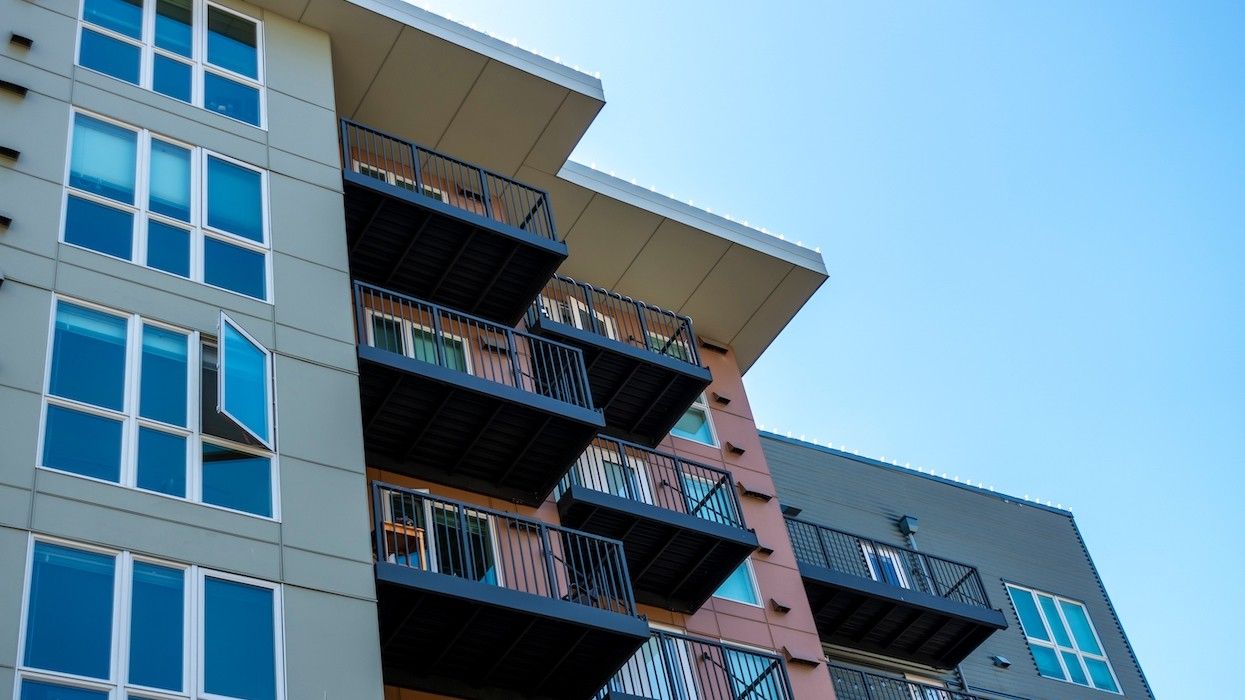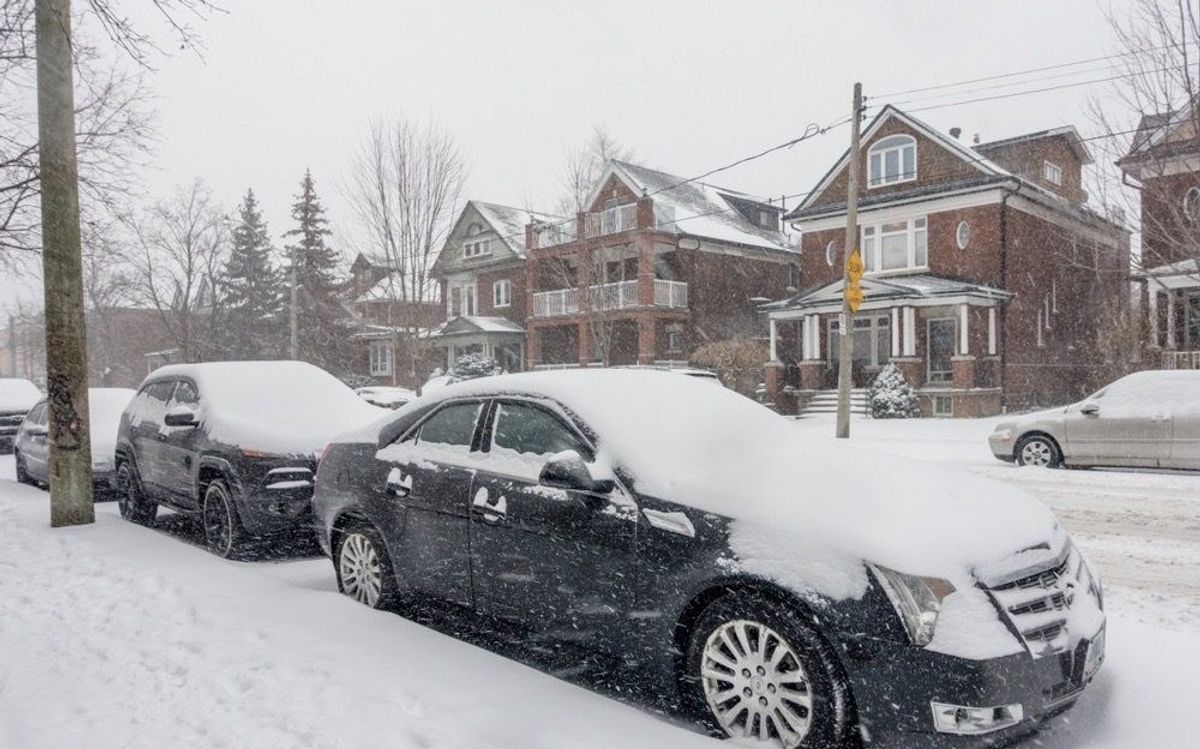Toronto has been grappling with its relationship with missing middle housing for years. To say the least, that relationship is strained. Despite significant moves that have been made with respect to garden suites, multiplexes, and bringing middle density on major streets, the city is still experiencing growing pains when it comes to getting these more progressive housing types off the ground in an efficient manner.
The story of 91 Barton Avenue is the quintessential example. To recap: the three-storey, nine-unit building comes from Green Street Flats — a Toronto-based developer that’s been fixed on missing middle housing for the past six years, including apartments under six storeys, multiplexes, laneway suites, and garden units — and Craig Race Architecture. It’s planned to include one affordable rental unit that will remain affordable for a period of 25 years, as well as two laneway suites in an ancillary building on the site.
Technically speaking, the three-storey building is permitted as of right, but what that actually means in planning terms is that the project needs to move through Toronto’s Committee of Adjustment to resolve any minor variances, though it doesn’t require zoning amendments.
The Committee of Adjustment is where things are getting stuck. First in April and then again in July, the project was denied by the Committee on two to one votes, and amid rampant opposition from the community (resulting in almost 40 letters of opposition). Green Street Founder. Leonid Kotov, tells STOREYS that he’s baffled at how difficult it continues to be to manoeuvre the city’s planning process and move projects like 91 Barton forward. With that project included, Green Street Flats has five projects of this nature in various stages of development.
“It's a little bit more complicated than your single-family home, but it's not to the point of a rezoning, so it falls into Committee of Adjustment because it's a minor in nature,” Kotov explains. “They might look at something [like 91 Barton] and say, ‘oh, wow, this is a lot of variances… therefore it's not minor.’ But, when you take one step back, it's just the way that the bylaw is getting interpreted.”
LINK to our HNTO slides presented to TEY Committee of Adjustment in SUPPORT of "Minor Variances" required for a new build 11-Unit EHON development at 91 BARTON AVE which included 1-BDRM #AffordableHousing unit deal for 25-years.
= ⛔️ DENIED..?!?!?
PDF - https://t.co/yCnURsiMor pic.twitter.com/lOEzmRUCXl
— HousingNowTO (@HousingNowTO) August 15, 2024
Between the first and second Committee of Adjustment meetings in April and July, the project has hit walls because the Committee felt it “was a great project, but just not here.” In addition, an argument has come up between the first and second meetings that the laneway needed to be widened by 22 centimetres per parameters put forth by the City’s transportation department. (There was also one occasion between where a planned meeting was deferred, Kotov says.)
The approval process in general has been arduous and haphazard, and while Kotov says that Green Street Flats will continue to move forward with 91 Barton in spite of these planning hurdles, he also touches on the fact that there is a much bigger problem when it comes missing middle housing, and the way that Toronto approaches it. Because with other like-spirited projects he’s had go through the Committee, it’s been a similar experience. “Is just a matter of which way the Committee goes that day.”
Graig Uens is Director of Planning at Batory Management, and he's working with Green Street Flats on the 91 Barton proposal. He notes it would be under construction by now had it been approved in back in April. Now, it doesn’t seem likely that building will be able to kick off this year. “We even had a public meeting for this, which is unheard of for a variance application... and we revised the plans to address people's concerns,” he adds.
“The zoning changes are great and they were needed, and they should still continue, and they should iterate over time. There really needs to be a focus now, I think, on process at scale.”
Like Kotov, Uens believes that the process associated with approving these types of, arguably unassuming, housing projects is fundamentally flawed, and in desperate need of a shake-up.
“We’ve got to create a supportive regulatory and process environment for these kind of missing middle projects to go through,” Uens says. “I think there's a real opportunity here for the city to say, maybe there are certain things that the Committee process isn't suited for, and maybe there's another process that falls somewhere between a zoning amendment and the Committee of Adjustment that will give people the due consideration for these kinds of proposals, which are inherently more complicated than a garden shed or a sunroom where you need a setback variance, but they're not nearly as complicated as a mid-rise building or a tower.”
"We are getting a lot of interest in these missing middle type projects, and I'm really encouraged, but there are just as many people that have contacted us with something that is particularly aggressive in terms of needing a number of variances,” Uens goes on to say. “And even though there might be merit in those applications because they're on a unique site, or they're in an area where I could make a planning case for it, I always have to advise those people that you're going through the Committee of Adjustment process where the outcome isn't certain, and you're not going to have a sense of who's even deciding on your application until you get to the Committee room that morning.”
Uens is also sceptical when it comes to the Committee of Adjustment format. Again, he feels it's flawed. As it currently stands, just four people are in the Committee at a time, and the chair, despite typically being the most experienced of the group, doesn’t get a deciding vote. This is a big part of the reason that 91 Barton has been rejected twice, as a result of two to one votes; there were actually two votes in favour at the last meeting in July, but one of those was from the Chair.
“The end result [here] is, instead of pushing the envelope here on this housing form, which we should be doing, people who have to go through the Committee process are dialling things back, making them a bit more measured, and perhaps not delivering as much housing as they might otherwise be able to. Because there's a concern about not being successful at the Committee process, or not being successful and having to go through a costly appeal process.”
Uens knows what he’s talking about; he spent some 14 years in Toronto’s planning department — he left in 2022 — and during that time, he led the Expanding Housing Options in Neighbourhoods initiative under former Toronto mayor John Tory, which eventually led to the legalization of laneway suites, garden suites, and fourplexes. “The zoning changes are great and they were needed, and they should still continue, and they should iterate over time. There really needs to be a focus now, I think, on process at scale.”





















